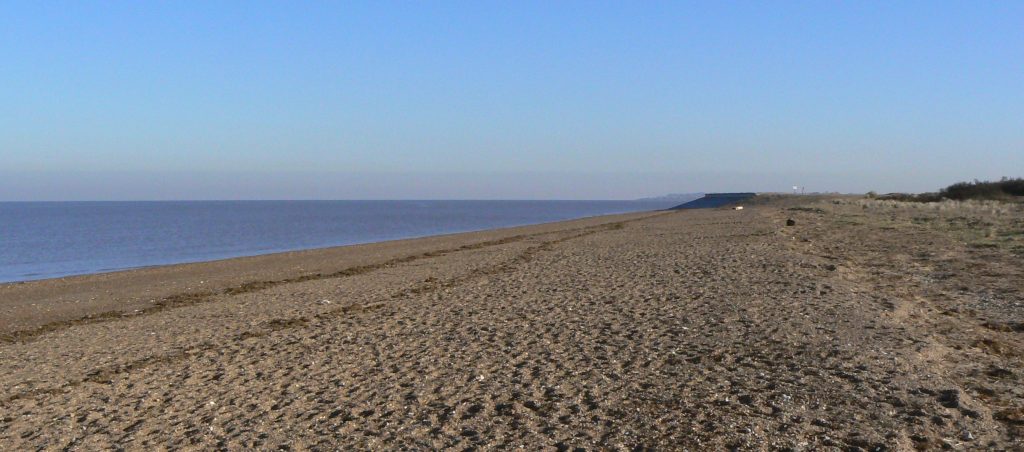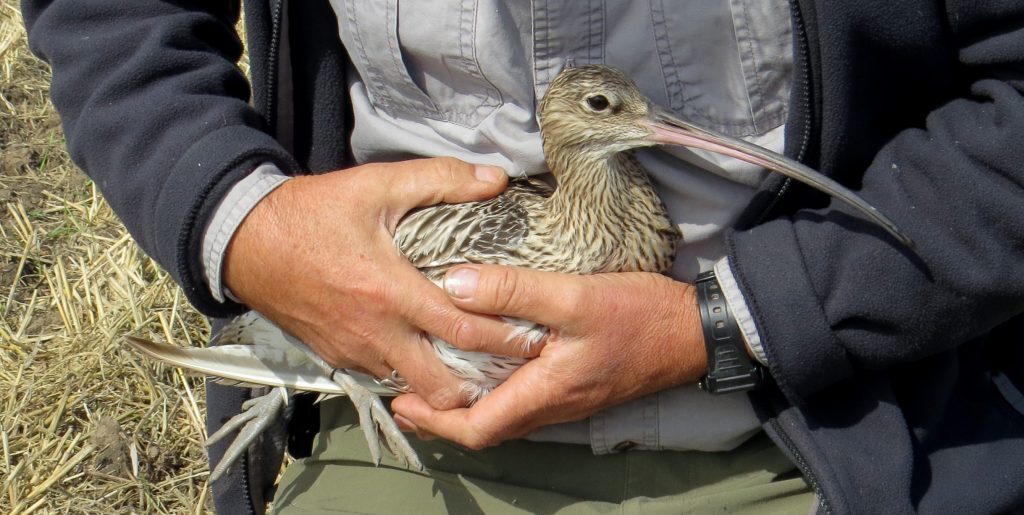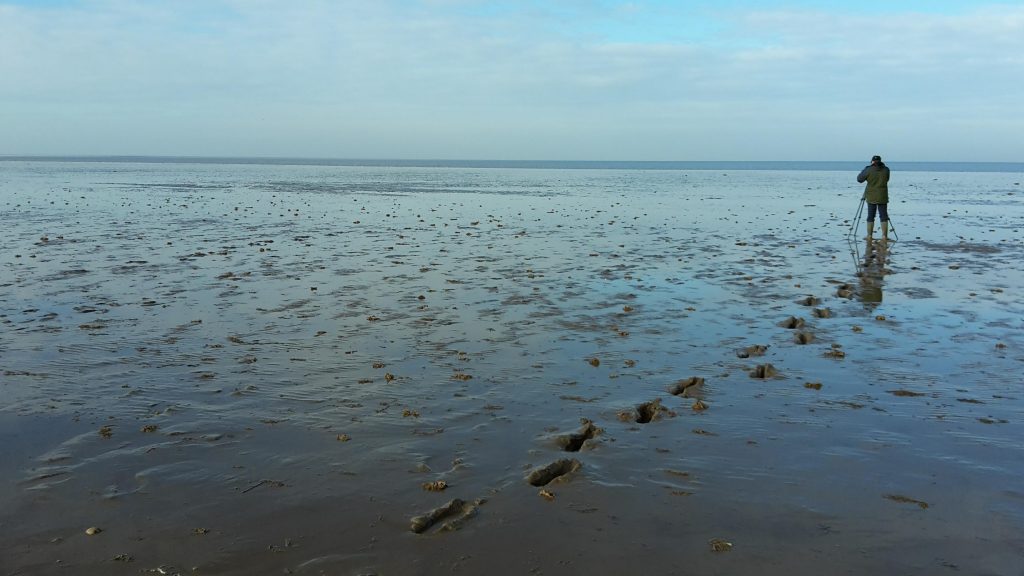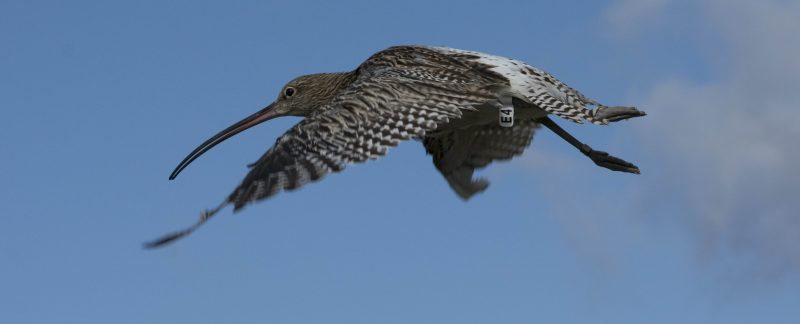If there is one preoccupation that unites the British above all others, it is discussion of the weather. The variable dominance of arctic maritime, polar maritime, polar continental, tropical maritime and tropical continental air masses cause rapid and variable changes in weather (and much conversation). Wind and rain can severely curtail fieldwork undertaken by the group; consequently following online weather predictions is fast becoming a collective obsession. The cold, snowy spell last year (22 February – 5 March) was so unusual that the press dubbed it ‘The Beast from the East’. This cold wave was officially named ‘Anticyclone Hartmut’, and brought widespread, unusually low temperatures and heavy snowfall to large areas. It combined with Storm Emma, which made landfall in southwest England and southern Ireland on 2 March. A milder repeat episode dubbed the ‘Mini-Beast from the East’ occurred on the weekend of 17 March 2018.
There can be increased mortality in wading birds in severe weather and we were concerned that the ‘Beast’ might have been fatal for some birds. Members of the Wash Wader Ringing Group therefore walked the majority of the eastern Wash tideline (our most extensively studied sector of the Wash) to look for dead birds. We found the following probable severe-weather casualties: Dunlin (6), Oystercatcher (3, all young birds hatched the previous summer), Redshank (1), Knot (2), Golden plover (1), Shelduck (1), Common Gull (1), Black-necked / Slavonian grebe (1). Fortunately, we did not identify any cold weather casualties amongst our study Curlew population. The snow cover was thankfully brief and the rest of the winter had been relatively mild. We did hear reports of Curlew feeding vigorously in fields where the ground was still soft and unfrozen. No recoveries of Curlew marked by the group were reported around this time.

We have a longstanding database of birds ringed by the group since the 1960s, and previous research undertaken by group members has demonstrated how increased numbers of ring recoveries can highlight difficult years for wintering birds. The combination of harsh winters and prolonged adverse weather conditions pose a particularly tough challenge for wader survival, including wintering Curlew. Thankfully, the last recorded instance of increased mortality amongst wintering Curlew, highlighted by increased ring recoveries, occurred in 1991 following a spell of severe weather between 2 and 14 February. Severe winters in 1982 and 1986 also coincided with an increase in ring recoveries.
We have been marking Curlew from 2012 with coded white leg flags to allow identification of individual birds in the field and have amassed over 2,000 sightings of marked birds. This has allowed us to compare the re-encounter rate of birds seen in the Winter of 2017/2018 (i.e. before the ‘Beast’) and those seen in the Winter of 2018/2019. Out of the 84 individual flagged birds seen in 2017/2018 within our East Wash study area, 74 were seen again in 2018/2019. This means that at least 88% of birds survived to the following winter; a proportion of birds will be alive but missed during our fieldwork, with the true value of survival probably exceeding 90%. This is a typical survival rate for a wintering population of Curlew on both the Wash (previous winter re-encounter rates on the Wash are around 85%) and elsewhere.

Although we have not identified any increase in mortality from searching for corpses, metal ring recoveries or diminished field sightings of Curlew, we don’t know if the severe weather caused by the ‘Beast from the East’ affected the birds in other ways. Curlew leave the Wash around the end of March/beginning of April to migrate to their breeding grounds, so a late spell of bad weather could leave a narrow window for birds to regain lost weight and come into good breeding condition.
Monitoring the breeding success of Wash birds breeding in Sweden and Finland by counting successful nesting attempts of multiple flagged birds is not practical, though most years we do receive reports of breeding individuals. It may be possible to infer likely breeding success or failure from the dates birds are first seen back on the Wash, but unfortunately our current fieldwork is not really designed to address this particular question. These issues highlight how much we still do not know about how Curlew populations use the Wash and the need to maintain our current levels of effort in monitoring.

Our fieldwork demonstrated the value of long-term monitoring and targeted field work in response to adverse weather conditions. We were able to use three approaches to assess Curlew survival on the Wash: walking the tideline to identify bird corpses, metal ring recoveries and subsequent year re-encounters of flagged birds. It seemed survival of smaller ‘grey’ waders was affected by the weather (a greater than usual number of dead birds were reported to the group from observers at a site on the south shore of the Wash), but the Curlew population had not been dramatically affected. One effect of climate change has been that ‘high mortality’ winters have not occurred at the same frequency recently as in previous decades. However, a potential concern is that compensation for poor breeding success and low recruitment of new Curlew into the population may be achieved by improved winter survival, but this would make the overall Curlew population more vulnerable to unusual adverse events during the winter. Our findings demonstrate the value of ongoing long term monitoring provided by the group (incorporating hundreds of hours of fieldwork involving dozens of volunteers) in determining the impact of adverse weather conditions on Curlew survival.

